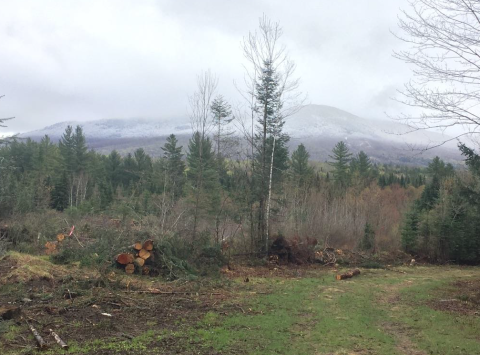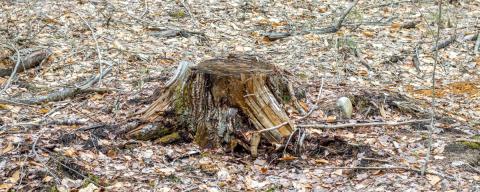April Woodlot Wanderings
Hello folks and Happy April! Hopefully everyone made it through the winter season just fine, although the winter-like weather in the north seems to want to hang around a bit longer. Over the past month, I have had the opportunity to visit a few active harvesting operations being conducted. I wanted to share a few observations and opinions about some of the benefits of forest management. You may have heard the following terms: thinning, patch cut, clear cut, timber stand improvement; as well as: logs, pulp, chips; and even: habitat, wildlife, browse, and cover. The harvest operations that I toured this past month, as well as the one I am working on at the County Forest in Stewartstown, cover most if not all of these terms. The first group of terms refer to different treatment options when looking to manage your forest. Thinning is the practice of removing some of the trees in the stand with the goal of promoting further growth of those that remain. The remaining trees may be of a more valuable species, ones most likely to develop into more valuable forest products, may offer the greatest benefit to wildlife, or simply the ones that look the healthiest and best to leave. The level of thinning often depends on which of these objectives is most desired, as well as the overall condition of the forest to start with. The amount of thinning may also be determined by the species that are most desired to regenerate and become the next forest.

Patch cuts and clear cuts may be considered the same treatment, just on different scales. Both essentially are the removal of all trees in an area of specified size. Patch cuts are typically less than 5 acres in size, while clear cuts are 5 acres and more. Both are also designed to promote a variety of species to regenerate the site, as well as to benefit a range of wildlife. For instance, smaller patch cuts will benefit sugar maple and beech rather than larger openings, which will be more beneficial for white birch and aspen. These openings will also create browse for moose and deer, as well as cover underneath the regenerating trees and shrubs for snowshoe hare and other small mammals. There are also many bird species that live in these openings, feed here, and others use them for mating rituals when they are first established.

Timber Stand Improvement (TSI) can refer to multiple practices. Some will refer to pruning, the practice of removing some of the lower growing branches from the main stem of the tree, as part of TSI. In our context here, we refer to TSI as the practice of removing undesirable, or less desirable, trees from close proximity to more favorable ones. This task is designed to open space for the favored trees to have room for their crowns to expand and grow, which will ultimately allow the stems to grow in diameter and improve quality. The amount of space to open around these favored trees is determined by the size of the trees and the size or spread of the associated crowns. Enough space needs to be provided for additional growth, but too much can change the growing conditions too dramatically and cause the tree to lose growth rather than expand. A fair amount of thought and planning must occur before deciding which of these management techniques are appropriate for the individual woodlot, and for the associated goals and objectives of you as the landowner. As a County Forester, I am prepared to guide landowners in the appropriate direction, provide some options and resources with which you may obtain your objectives, and help you set things in motion with other professionals.
Have a question about your woods? Contact your Extension County Forester today!
Do you love learning about stuff like this? Subscribe to the NH Woods & Wildlife Newsletter.
A quarterly newsletter providing private woodlot owners in New Hampshire with woodlot management news, pest updates, resources, and more.

